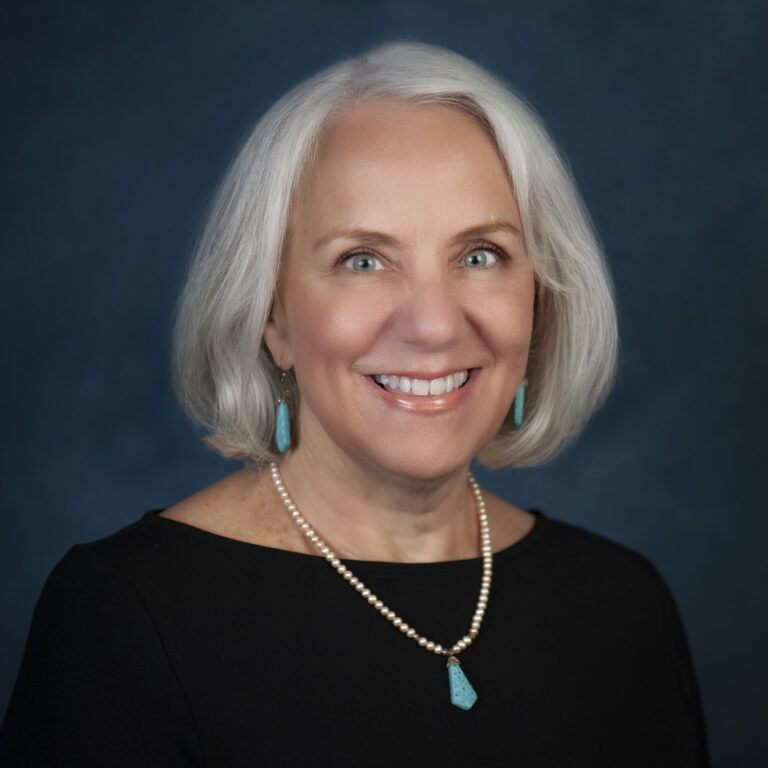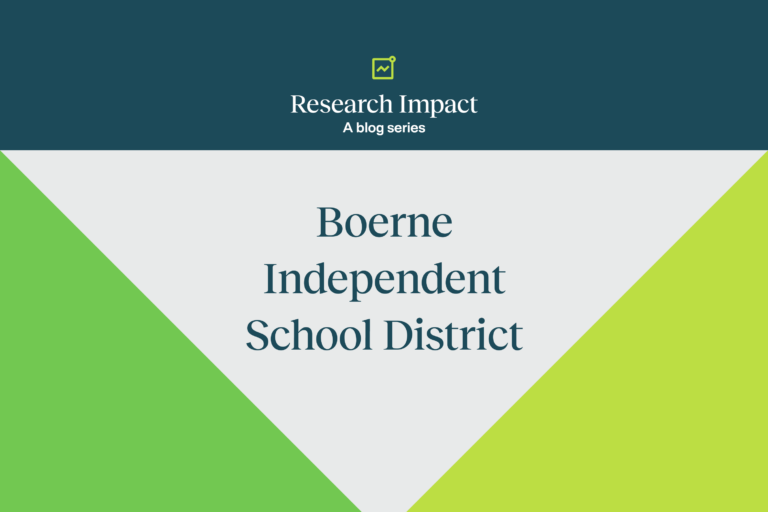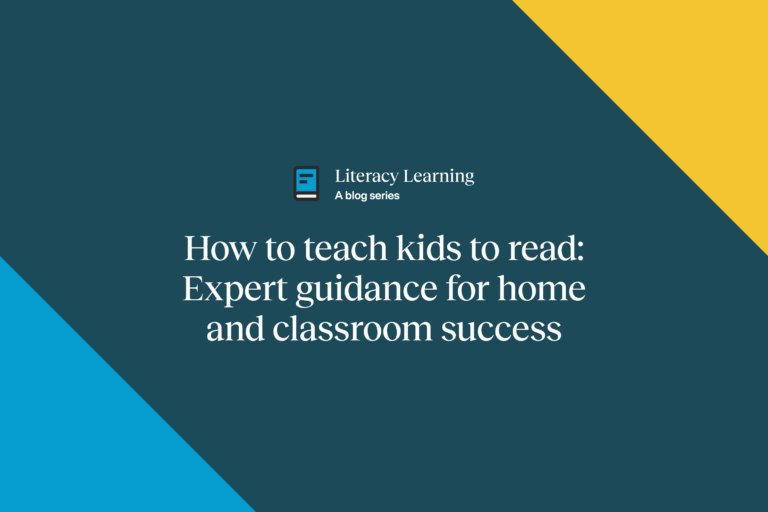Insights from Laura Stewart, CAO
Laura Stewart, Chief Academic Officer, is on a mission, and it’s an important one. Stewart says that children today are at risk of falling behind in school and life if they don’t learn to read proficiently by the end of third grade. Her goal is to help all children “flourish as literate citizens of the 21st century.”


What inspired you to join 95 Percent Group?
My true passion has been literacy and ensuring all our kids have opportunities to become literate citizens. Here is my own mission statement: “I want to play whatever role I can to ensure that ALL children learn to read joyfully in the primary grades, enabling them to flourish as literate citizens of the 21st century.”
Reading is not a natural skill, and I believe a structured literacy approach, based in the current body of evidence known as the “science of reading,” is the best approach for nearly all children. And I firmly believe that 95 Percent Group provides the best resources available today for educators and students.
What do educators need to know?
When it comes to reading instruction, I always encourage educators to follow the science of reading as well as the implementation science. The evidence we have now is fairly consistent and overwhelming. For example, we know that explicit and systematic phonics instruction typically leads to better outcomes in learning to read.
Today this science is a movement. It is a movement for what’s best for children and against theories which have been proven false. For example, the idea that children should use pictures or context to guess at an unknown word. That is not an effective and efficient route to word recognition; utilizing decoding, however, is an efficient and effective route to word recognition. Another pervasive and persistent idea is that there are hundreds of ways to learn to read, and no set of instructional principles that will be the most effective for most children. These are just not true, and the science of reading has helped to shine a light on that.
I would also tell them to keep the faith. When educators start working within a more structured approach, they often journey from being overwhelmed to enlightened, when they see real results with their students. Then they are believers.
How does 95 Percent Group help?
We primarily serve elementary classroom teachers, special education teachers, and reading specialists. Our classroom teachers deploy our intervention programs for Tier Two instruction.
I believe it’s critically important to build teacher knowledge on the science of reading and a structured literacy approach; teachers need an understanding of how children learn and how this approach is different. But they also need the proper materials to put their new knowledge into practice. I have experienced many examples of long intensive training that require huge financial commitments. Then teachers have to go back to their classrooms and try to enact what they have learned with kids, but they don’t have the support materials or ongoing coaching they need. I see a huge gap between the development of teacher knowledge and application of that knowledge. I want to make an impact by helping to bridge that.
I tell teachers: “Give yourself time to become fluent in this new approach! Give yourself grace to learn. And, once you learn, you will never want to turn back to another method.”
I believe that 95 Percent Group is uniquely positioned to help guide the way for an ever increasing science of reading base in our country. We provide the entire ecosystem for teachers and their students. This includes professional learning, assessment, and instructional resources so that teachers can turn theory into practice and help each child make progress.
Our ecosystem offers consistency. Students will get into the instructional routines and teachers will learn the instructional language; the beauty of these routines is that they are the same across all of the products in core and intervention. Once a teacher and her students know the routines, the students can really concentrate on the learning and the teacher can concentrate on the students’ responses so she can make those important next-step decisions.
How do students respond?
After implementing a structured literacy approach, I hear from teachers all the time that they didn’t believe their students could learn so well and so quickly. They tell me, for instance, that the things their Kindergarten children are doing are far and above what they’ve ever been able to do before. Teachers love seeing their students experience this joy of accomplishment in reading.
Why whole class instruction?
Reading is not something we are wired to do; we don’t learn to read naturally. Some of us appear to learn to read almost effortlessly, but it is a pretty small percentage. So the instructional model that casts the widest net over the largest number of children and works for the most is what we need to use in a core program. About 80 to 85% of the class needs to be taught well in the core program, which leaves fewer kids for intervention in Tiers 2 and 3. You can’t intervene your way out of a Tier 1 problem. This is where our nation’s schools need to get, and we are not where we are yet.
What is your greatest hope for the future?
The benefits of teaching phonics are undisputed in the research. Kids who are provided with effective phonics instruction early on typically do better than kids who are not. There is really no questioning that today. There is also lots of anecdotal evidence about what specific approaches to phonics are more effective than others. At 95 Percent Group, our program aligns with both this hard-core evidence and with the best practices from the field. We also have really solid efficacy studies; no other company has invested in the level of efficacy research we have. This is something that makes us a company of real integrity, and that matters.
So my hope for the future is that more and more educators use our resources because they genuinely help each child and, in doing so, they help the greater good. Because our programs are proven, we help educators do their jobs well and in turn, nurture the joy and desire to read in every child.
Science is always evolving. What are some other things we know about the power of literacy? Dr. Maryanne Wolf is an amazing thought leader and good friend. She says that if children don’t develop deep neurosystems that allow them to engage with literature, they miss important opportunities to develop empathic relationships that allow them to connect with others. It especially helps them have a better deeper experience with those who are different than they are.
I am going to say this, and I am being serious. If our children don’t develop solid reading skills, humanity is in danger. The stakes are that high. Not only do we need high-level literacy skills to function in a knowledge economy, but we need to have those firsthand experiences and those vicarious experiences with literature that allow us to develop empathy and understanding. It is absolutely critical.
What do you do to stay current on the science?
Lots of reading, podcasts, and webinars! I also meet regularly with other professionals where we have opportunities to learn from one another and discuss some of the big ideas and contemporary research in the field. I was previously at The Reading League and really admire their work, so I keep current with the resources they provide. Emily Hanford’s reports have been game-changers in turning the tide toward the science of reading; I keep up with her work and point others to her. They are linked below in my suggested resources.
Anything to add?
Today many children are behind, likely made worse by the years of the pandemic. A lot of third grade teachers have students who aren’t reading yet. It’s time for acceleration. It’s time to use the best resources available and add in additional support, such as before-school and after-school tutoring.
Every child deserves to reap the benefits of a literate life. Every child, regardless of where they live, their background, their life experiences, deserves a place at the table. The minute the light bulb goes on for a child and when they realize they are reading…that is so magical! Providing good first instruction which leads to those incremental steps of success motivates them to keep going. Distractions, such as devices and social media, come into play pretty early with children unfortunately. For reading to be part of a child’s life, the joy of accomplishment has to come pretty early too. In addition to teaching them how to read, we have to feed them with relevant, exciting, stimulating and important books and texts that fuel their desire to read. We need to help children find the content or topics that fuel curiosity. And as adults we need to role model our enjoyment of reading and learning too.
Suggested resources: what Laura Stewart is reading
- At a Loss for Words
- Ending the Reading Wars: Reading Acquisition From Novice to Expert
- Hard Words
- The Science of Reading: Evidence for a New Era of Instruction
- What the Words Say
- What Research Tells Us About Reading Instruction
About Laura Stewart
Laura Stewart, Chief Academic Officer, is a nationally recognized Science of Reading and Structured Literacy advocate and expert who will serve as the company’s spokesperson and will continue to build its thought leadership position in the literacy market. Stewart has dedicated her career to improving literacy achievement at leading education companies including The Reading League, Highlights Education Group, and Rowland Reading Foundation.



